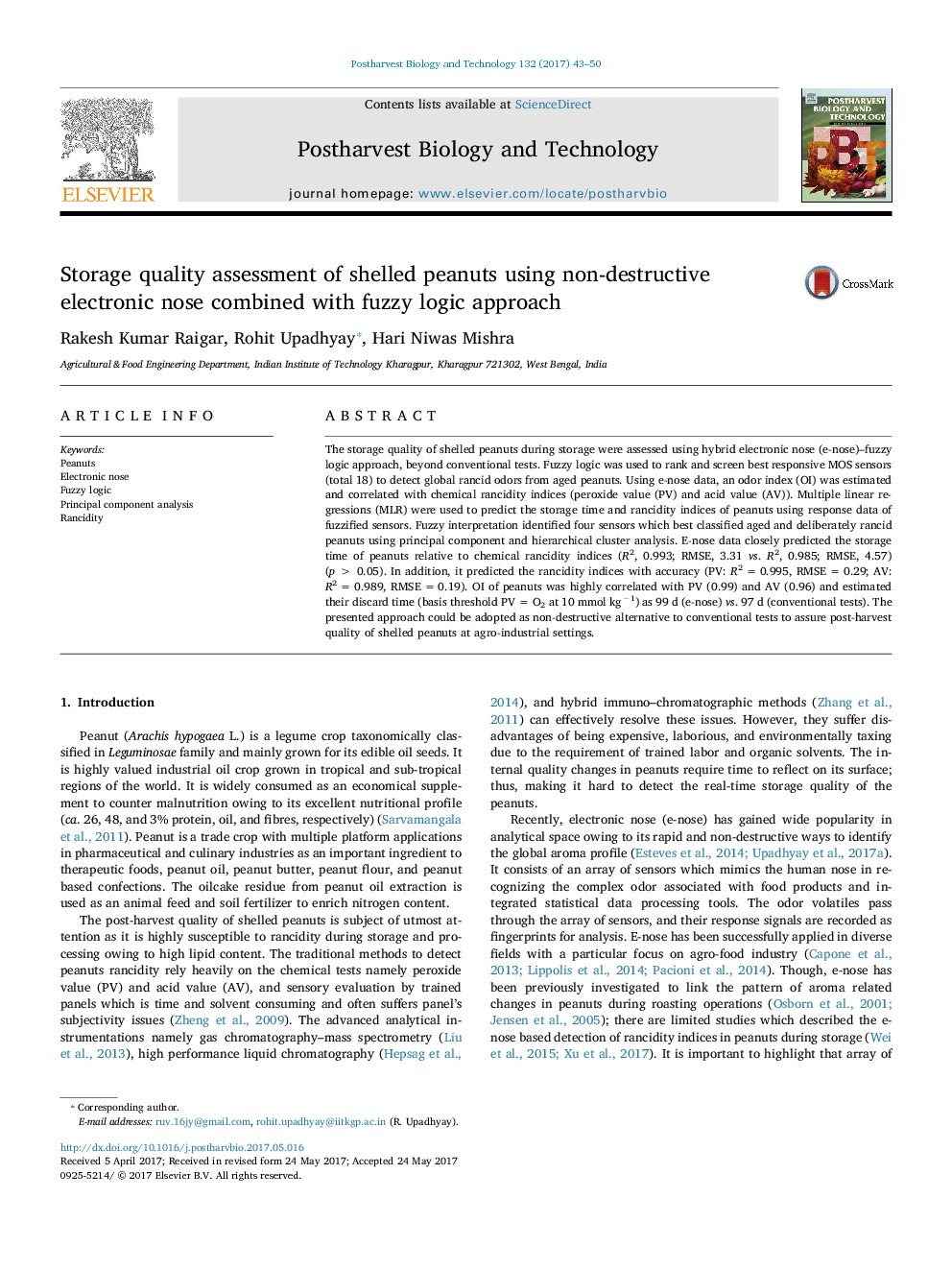ترجمه فارسی عنوان مقاله
ارزیابی کیفی کیفیت بادام زمینی خرد شده با استفاده از غشای مخاطی الکترونی همراه با رویکرد منطقی فازی
عنوان انگلیسی
Storage quality assessment of shelled peanuts using non-destructive electronic nose combined with fuzzy logic approach
| کد مقاله | سال انتشار | تعداد صفحات مقاله انگلیسی |
|---|---|---|
| 82220 | 2017 | 8 صفحه PDF |
منبع

Publisher : Elsevier - Science Direct (الزویر - ساینس دایرکت)
Journal : Postharvest Biology and Technology, Volume 132, October 2017, Pages 43-50
ترجمه کلمات کلیدی
بادام زمینی، بینی الکترونیکی، منطق فازی، تجزیه و تحلیل مولفه اصلی، گزش
کلمات کلیدی انگلیسی
Peanuts; Electronic nose; Fuzzy logic; Principal component analysis; Rancidity;

